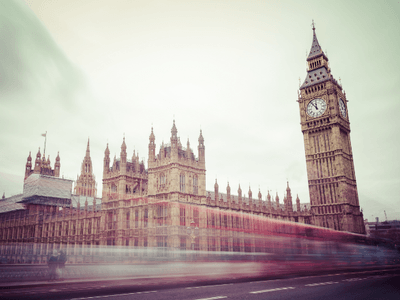Lots of economic commentators will tell you that we are in a Goldilocks economic scenario. If you google the expression, the result tells you that a Goldilocks economy describes an ideal state whereby the economy is not expanding or contracting by too much, has steady growth, preventing a recession, but not so much growth that inflation rises by too much and that the scenario is ideal for investing because as companies grow and generate positive earnings growth, stocks perform well.
Lovely; and I don’t disagree with that conclusion. I did however struggle with the link between a benign economy and a presumptuous and obstreperous young lady who trespassed into the bears’ house, ate their food, trashed their furniture, slept in all their beds and then absconded without criminal redress. The only thing she did not do is nick their booze and it hardly represents a tale of moral guidance for our youngsters. Further investigation[i] reveals that the link is all to do with the third bowl of porridge that was “just right;” neither too hot nor too cold. Now I know. The global economy looks neither too hot nor too cold.
Further thinking endorses the analogy with the optimal porridge temperature. Across China, Euroland, Japan, the UK and the US we are expecting a strong economic bounce out of the COVID 19 crash as the vaccines do their work; hopefully, before the new strain runs too much riot. Inflation is trending down, except in China where it has gone negative but that is meant to be a short-term blip driven by pork prices falling from high levels before. Wage inflation is holding up, apart from Japan, and retail sales are pretty much back to post-COVID 19 levels. Collectively, personal savings have gone up during COVID 19 which raises the hope that spending holds firm later in the year. That probably explains why manufacturing and services companies are indicating that demand is going to remain firm.
Of course, this optimism must be weighed against potential negatives on the economic horizon, namely that unemployment would almost certainly be much higher without government intervention and that consumer confidence is dipping on the back of the new lockdowns driven by the new strain.
Leaving aside the Capitol Hill riot in early January, the world of politics appears to be somewhat stable and moving to a better place under Biden. I expect Biden to be more measured in his tussles with China. Brexit has passed with little trouble so far and in Euroland the troublesome “rule of law indifferent” Poles and Hungarians have agreed to the €750 billion stimulus package. So on the whole I don’t envisage too much political interference on the stock markets.
Monetary policy appears to be supportive with all the central bankers, apart from the Chinese, indicating ongoing low interest rates and ongoing Quantitative Easing. Governments, encouraged by the prospect of low interest rates, are looking to continue to spend on fiscal programs like wage supported furlough, infrastructure spending and loans to businesses.
So, this all seems a good starting base for upwardly mobile progress. Is it all in the price though? Well, PEs or price earnings ratios are above long-term averages, which means investors are generally willing to pay more on the expectation that we’re in a growth environment. However, it must be noted that we would expect this in low interest rate environments, as investors are more likely to invest than save.
Investor sentiment is turning but it is not yet a worry. The old adage is that bull markets are born in pessimism, mature in scepticism, grow old in optimism and die in euphoria. My indicator here is the topic of conversation at my Gloucestershire based mother’s (virtual) dinner and bridge parties where nobody is talking about the stock market yet. When they do, that’s a danger signal. I reckon that we are starting to cross from pessimism to optimism.
Expectations for companies’ earnings, downgraded when COVID 19 struck, are now beginning to be revised upwards and that should support share prices. But by and large, the positives outweigh the negatives and momentum seems positive as well.
So that’s where we are and how we got here. Where next? What could go wrong with my view that the direction from here is going to be up; and are we heading for a Snow White-ish fairy tale ending or one that is more aligned with the wolfish fate of the first two of the three little pigs?
Risk number one is that consumer price index (“CPI”) inflation gets out of control. There is a risk that when things first return to normal that the supply chain might not recover quick enough to meet a sudden increase in demand. If we all decide to book holidays abroad then the cost of airfares could rise. I think most governments will see through this as a temporary measure and not over-react too quickly. Longer term, the dislocations of COVID 19 will probably leave some unemployed people to struggle to get their jobs back. If business travel declines because we all video call each other, then the business class flight attendants will have to find something else to do. That will take time and the unemployment overhang will probably dampen the cycle of CPI inflation pushing employees to ask for wage increases, which in turn drives demand and pushes the CPI higher.
Inflation could be driven by the vast amounts of extra cash sloshing around the economy being recycled as loans by banks and, technically speaking, pushing the velocity of money higher. Banks used to enjoy net interest margins of 4%. Net interest margin or NIM is the difference between what banks pay their depositors and what they lend to borrowers at. NIMs are now much lower at the 2% level because, as a generalisation, banks cannot charge customers for holding their cash because customers tend to just move their cash somewhere else. Small NIMs provide a small reward for the same level of risk (lending money) and this is not incentivising the banks to lend as much as might otherwise be the case.
I don’t see interest rates moving higher any time soon. Who wants higher interest rates? The last time that the Fed tried to hike rates, we suffered the “taper tantrum” and the Fed quickly reversed out of their hawkish approach. China has tried to tighten in the past but usually found that the damage done took yet more monetary easing to rectify. Central bankers are probably shy about putting rates up.
Governments don’t want higher rates. Theory has it that large debts don’t matter if your government can pay the interest rate bill and roll the debt over. So long as GDP is growing at more than the interest rate, a government should be able to pay down its debts and pay the interest. That’s where we are and neither post-COVID-19 more indebted companies and governments nor individuals want rates to go higher.
My conclusion is that I think we have to wait for unemployment to come down before inflation becomes a danger.
The other danger signal is that companies decide to start de-leveraging too quickly. If companies divert cash flows to paying down their debt and stop investing for growth, then companies’ earnings expectations could disappoint on the downside.
I have in mind that the solution to our over-leveraged governments is to write off some of the government debt owned by the central bankers. QE works like this; the government sells debt, which the central bank buys with money that it (electronically) printed. When the debt matures, the government has to collect money from tax revenues and use that to pay back the loan and the Central Bank then electronically cancels the cash. In this example, the money creation is temporary and not deemed to de-base the currency. If a single country cancelled government debt owned by its central bank, then this would probably cause a drop in the value of its currency. But if all nations did this together, then no single currency should fall and the world would be free of some of the debt problem. With corporates, the equivalent would be converting debt to equity but I am not sure that would have such a positive outcome.
So, by way of conclusion, I expect the Goldilocks scenario to persist, interest rates to firm up a little but not by much and the stock markets to continue to advance. And I have my eyes sharply on the lookout for any problems ahead.
John Royden, Head of Research
The value of securities and their income can fall as well as rise. Past performance should not be seen as an indication of future results. All views expressed are those of the author and should not be considered a recommendation or solicitation to buy or sell any products or securities.



